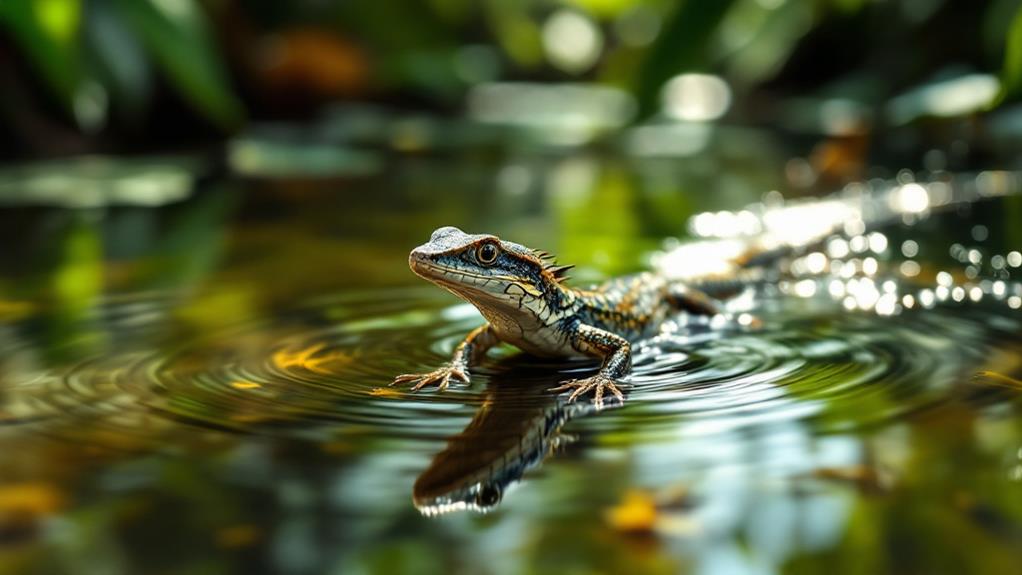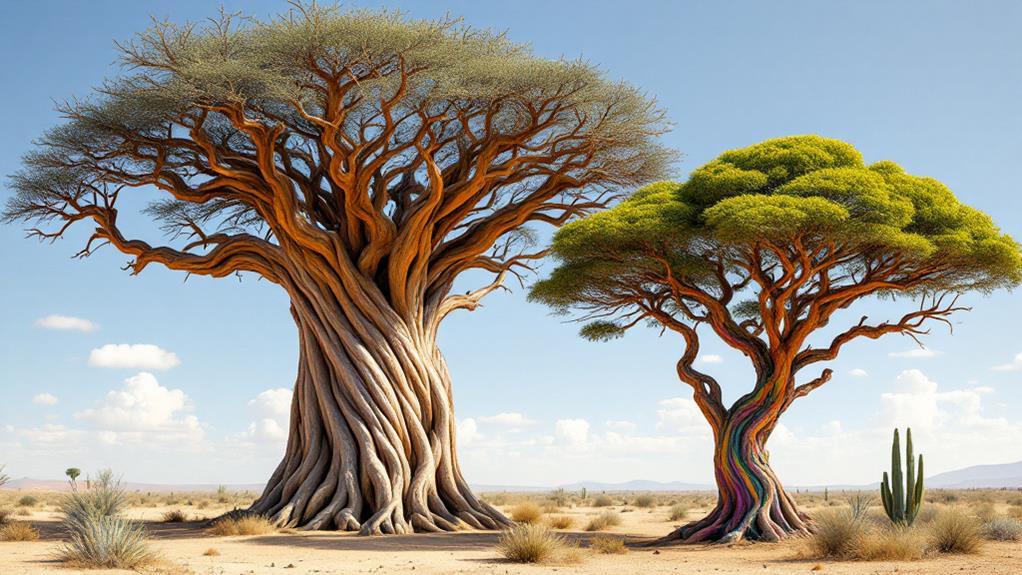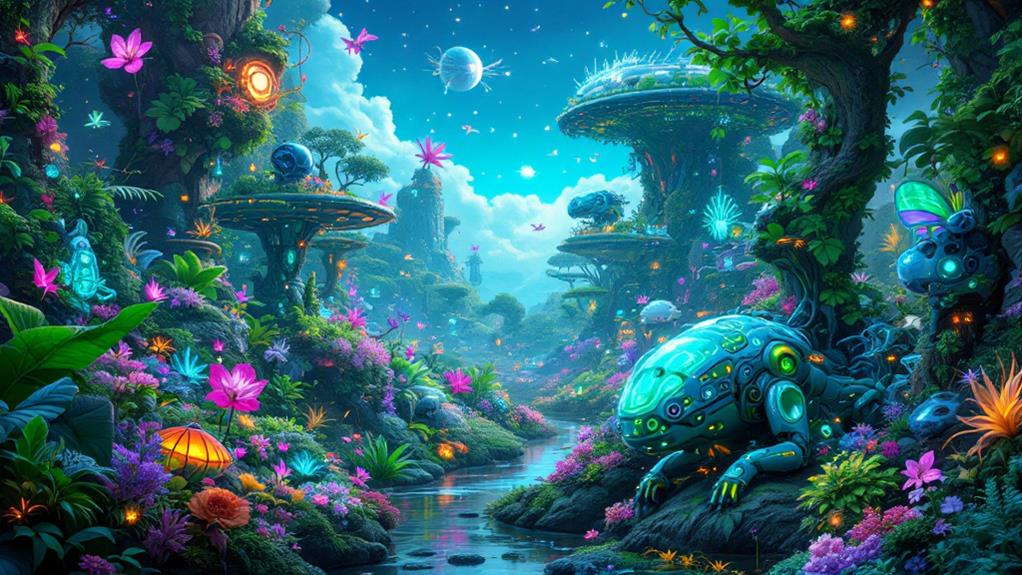Fascinating Facts About Flowers: Nature’s Most Beautiful Creations
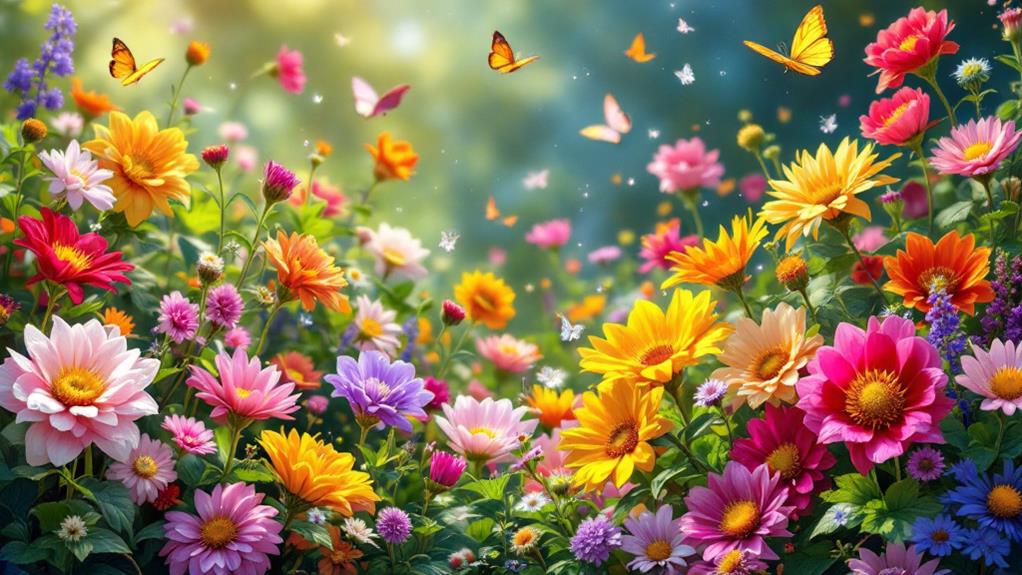
When you investigate the world of flowers, you'll uncover a fascinating language used to convey unspoken emotions. Red roses mean love, while marigolds signal jealousy. Flowers use colors and scents to attract pollinators, with bees loving violets and birds drawn to bright hues. Some orchids even trick insects into helping them pollinate. Nature's extremes appear in flowers like the massive Rafflesia arnoldii and the tiny aquatic Wolffia. Artists and cultures have long drawn inspiration from blooms, as seen in Japan's cherry blossoms and Hinduism's lotus. Beyond beauty, flowers offer culinary delights and medicinal benefits. There's so much more to reveal.
The Secret Language of Flowers
Flowers have long been used as a colorful form of communication, conveying emotions and messages without words. You might not realize it, but each bloom carries its own unique meaning, a practice known as flower symbolism. This form of floral communication dates back centuries and spans cultures worldwide, allowing you to express feelings in a subtle yet powerful way.
When you give someone a red rose, you're not just offering a pretty flower; you're conveying love and passion. A bouquet of white lilies can symbolize purity and virtue, making them perfect for weddings. On the other hand, presenting marigolds can signify grief or jealousy, so choose your blooms wisely. This language of flowers, or floriography, became especially popular during the Victorian period, where people used it to express sentiments they couldn't speak aloud.
Understanding flower symbolism can improve how you communicate with others. Next time you select a floral arrangement, consider what each flower represents. You can craft a message using the lively colors and shapes of nature, expressing what words sometimes fail to convey. It's a beautiful, timeless way to connect with others through the silent language of flowers.
Unique Pollination Strategies
While the language of flowers allows you to communicate through symbolism, nature's intricate dance of pollination guarantees these blooms continue to thrive and tell their stories. Flowers have evolved unique strategies to attract their perfect pollinators, assuring their survival.
Let's investigate how floral adaptations improve pollinator attraction:
- Color and Scent: Flowers use lively colors and enticing scents to lure specific pollinators. Bright red and yellow hues attract birds, while bees are drawn to blue and violet shades. Flowers like jasmine release strong fragrances, enchanting nocturnal pollinators like moths.
- Shape and Structure: The physical structure of a flower can determine its pollinator. Tubular flowers cater to hummingbirds with their long beaks, while flat, open blooms provide easy access for butterflies.
- Nectar Guides: Some flowers have patterns visible only under UV light, acting as landing strips for bees. These guides direct pollinators precisely to the nectar and pollen, guaranteeing effective transfer.
- Mimicry and Deception: Certain orchids resemble female insects, tricking male pollinators into attempting to mate, inadvertently collecting and spreading pollen.
Nature's creativity guarantees that every flower finds its match in the pollinator world. By understanding these adaptations, you appreciate the delicate balance sustaining our planet's floral diversity.
Record-Breaking Floral Wonders
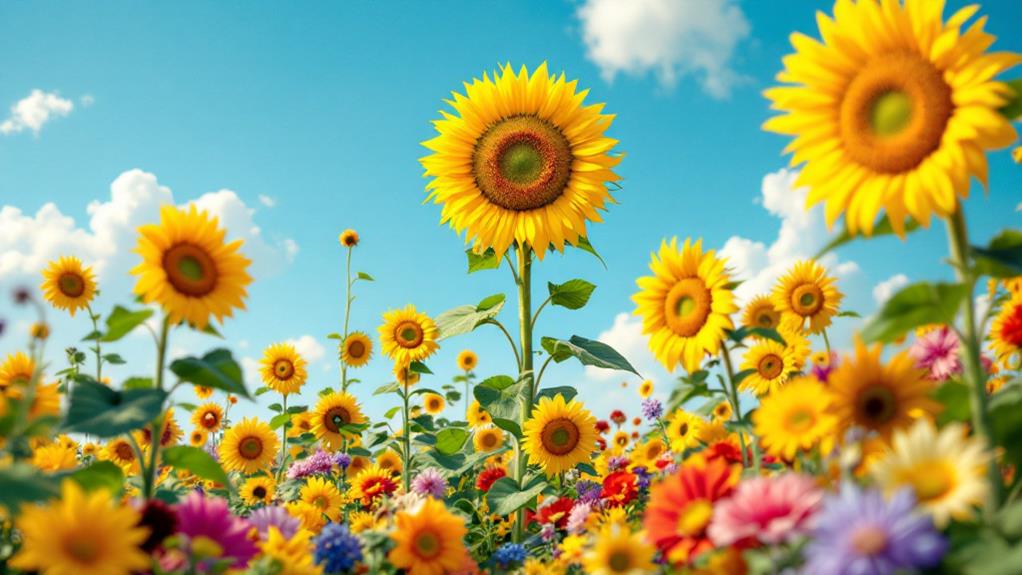
Among nature's most astonishing creations, record-breaking flowers captivate with their sheer size, beauty, and resilience. Imagine standing next to a Rafflesia arnoldii, a rare species boasting one of the largest flowers on Earth. Its giant bloom can reach over three feet in diameter and weigh up to 24 pounds. This colossal flower, native to Southeast Asian rainforests, emits a strong odor resembling rotting meat, earning it the nickname "corpse flower." Despite its pungency, it's a marvel of nature's design.
Another remarkable contender is the Titan Arum, or Amorphophallus titanum, renowned for its towering inflorescence. This rare species can grow over ten feet tall, with a bloom appearing only once every few years. When it does, it's an event that draws enthusiasts worldwide, enthusiastic to witness its fleeting beauty and infamous smell.
In contrast, consider the Wolffia, the world's smallest flowering plant. Each bloom is barely visible to the naked eye, yet it thrives in aquatic environments globally. These record-breakers showcase the incredible diversity of the floral kingdom, reminding you of nature's endless capacity for wonder. Next time you encounter a flower, remember these giants and marvel at their extraordinary stories.
Flowers in Art and Culture
As you marvel at the impressive feats of nature's record-breaking flowers, it's fascinating to see how these botanical wonders have deeply influenced art and culture throughout history. Artists and creators across the globe have used flowers to convey emotions, tell stories, and decorate spaces. Regardless of being in paintings, literature, or textiles, the impact of flowers is undeniable. They have served as powerful symbols in different cultures, each with unique meanings.
Consider the following ways flowers have been used in art and culture:
- Flower Symbolism: In Victorian England, people used flowers to express sentiments they couldn't speak aloud. Each bloom had a specific meaning, creating a silent yet eloquent language.
- Floral Motifs in Art: From Van Gogh's sunflowers to Georgia O'Keeffe's magnified blossoms, painters have immortalized floral beauty, using it to investigate themes of life and death.
- Cultural Celebrations: In Japan, cherry blossoms symbolize the fleeting nature of life, celebrated annually during Hanami festivals.
- Religious Significance: In Hinduism, the lotus flower represents purity and divine beauty, often depicted in religious iconography.
Flowers, with their rich symbolism and history, continue to inspire and captivate.
Surprising Uses of Flowers
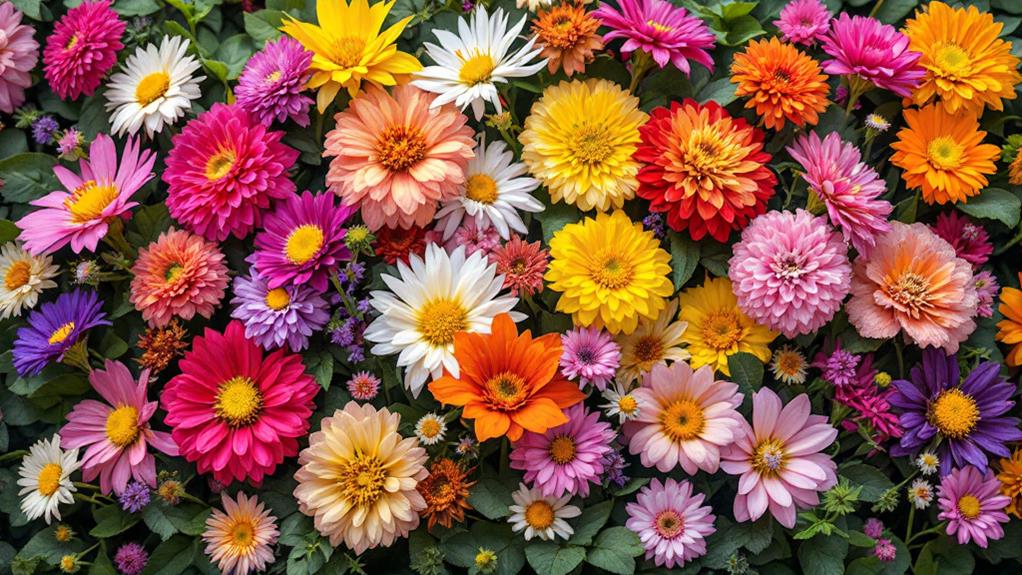
Flowers aren't just pretty to look at—they've got some surprising uses that might catch you off guard. Many blooms possess medicinal properties that have been harnessed for centuries. For example, chamomile flowers are famous for their calming effects, often used in teas to soothe anxiety and aid sleep. Lavender is another floral powerhouse; its crucial oil can help relieve stress and promote relaxation. Even the lively marigold offers benefits, with extracts used to treat skin conditions and inflammation.
But flowers aren't only about healing; they're also a feast for the senses. Edible blooms like nasturtiums, violets, and pansies can uplift your culinary creations. These flowers add a splash of color and a hint of flavor to salads, desserts, and beverages. Nasturtiums have a peppery taste, perfect for spicing up your dishes, while violets offer a sweet, floral note.
Next time you see a garden in bloom, remember: those flowers might hold more potential than you realize. Regardless of their medicinal properties or as edible blooms, flowers prove that nature's beauty can be both therapeutic and delicious. Accept their surprising uses, and you'll uncover a whole new world beyond their petals.
